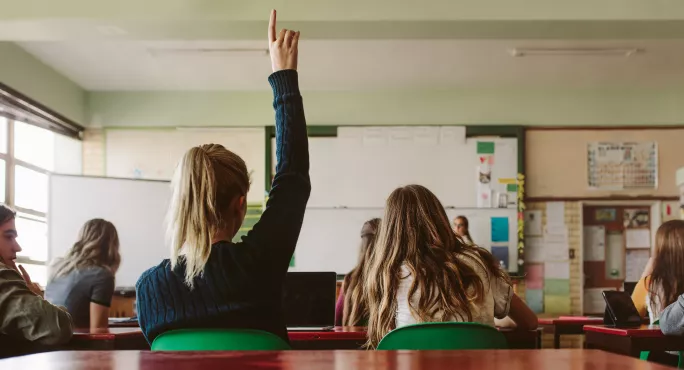- Home
- 5 tips for supporting students with disabilities
5 tips for supporting students with disabilities

Last October, I narrated a French production of High School Musical. I felt like an idiot - we all did - but, dressed as a cheerleader and speaking a language I loved, I also felt grateful. Some might have accepted my reluctance to participate - what if I fell off the stage, for example? Instead, my teacher made it accessible.
As a visually impaired student, I’ve had some wonderful teachers and learning support assistants, but accommodations aren’t always made. And those accommodations matter enormously.
Read more:
- Why you need to know about EDS, HSD and hypermobility
- EHCPs: a quick guide to making them work
- What’s it like being a Sendco?
How to support students with disabilities
So, what can teachers do to support students such as myself? Although every pupil’s needs are different, here are several easy steps to ensure equality in education and wider improved attitudes towards disability.
1. Communication is key
Not everyone is comfortable discussing their needs. However, communicating solely with support staff - even when we’re standing right next to them - can make us feel isolated and ignored, and is often mirrored in public places. After all, we have our own minds, and know our own needs better than anyone.
2. Abandon assumptions
Similarly, assuming we can’t participate can be damaging. It may not be obvious that a visually impaired person could be a talented photographer, or that someone with cerebral palsy might enjoy sport.
Some things are more accessible than others. But reinforcing invisible barriers, when we might be perfectly capable, prevents us from exploring our interests and honing our talents. Solutions often exist, even if they seem hidden; and hopefully, in future, blind MasterChef contestants and deaf singers won’t be so surprising.
3. Reward realistically
Early in secondary school, my tutor nominated me for a “Settling In” award. Her heart was in the right place, but I’d only made two friends; my peers knew I was socially anxious and generally unhappy. Accepting the award in front of them all was humiliating.
I felt like the token disabled student, a ticked box to demonstrate a dedication to inclusion, any tangible achievements overlooked in favour of my “inspiration factor”. Yet at sixth form, I’ve received awards independent of my disability. This is how it should be, and quashes the notion that we’re exceptional simply because we’re different.
4. Teach tolerance
A vital aspect of this is raising awareness in the school community. We’re not responsible for representing our disabilities; some want to be vocal, others don’t. But using PSHE programmes as well as following the advice above, thus modelling equality and understanding in the classroom, will help combat the disrespect through ignorance we often face, like thoughtlessly kicking a white cane out of the way, or moving someone’s wheelchair without their permission.
5. An open mind is all you need
But how do you educate about every disability? Fear not - we don’t expect you to. With a pupil’s permission, sessions could be tailored specifically, representing the ways in which we adapt tasks as normal. But above all, teaching pupils to communicate with us, let go of stereotyped assumptions and recognise our genuine achievements is the most worthwhile education you can provide; pupils can apply this transferrable mindset to any disability.
Things may sometimes go wrong - I remember laughing off a SENDCO’s embarrassment when he realised I couldn’t see the hand he was expecting me to shake - but an open mind and a willingness to learn will go a long way to ensuring we all have our voices heard. The cheerleader’s outfit is optional.
Riannon Chaplin is a Year 13 student in Essex
Register with Tes and you can read two free articles every month plus you'll have access to our range of award-winning newsletters.
Keep reading with our special offer!
You’ve reached your limit of free articles this month.
- Unlimited access to all Tes magazine content
- Save your favourite articles and gift them to your colleagues
- Exclusive subscriber-only stories
- Over 200,000 archived articles
- Unlimited access to all Tes magazine content
- Save your favourite articles and gift them to your colleagues
- Exclusive subscriber-only stories
- Over 200,000 archived articles
